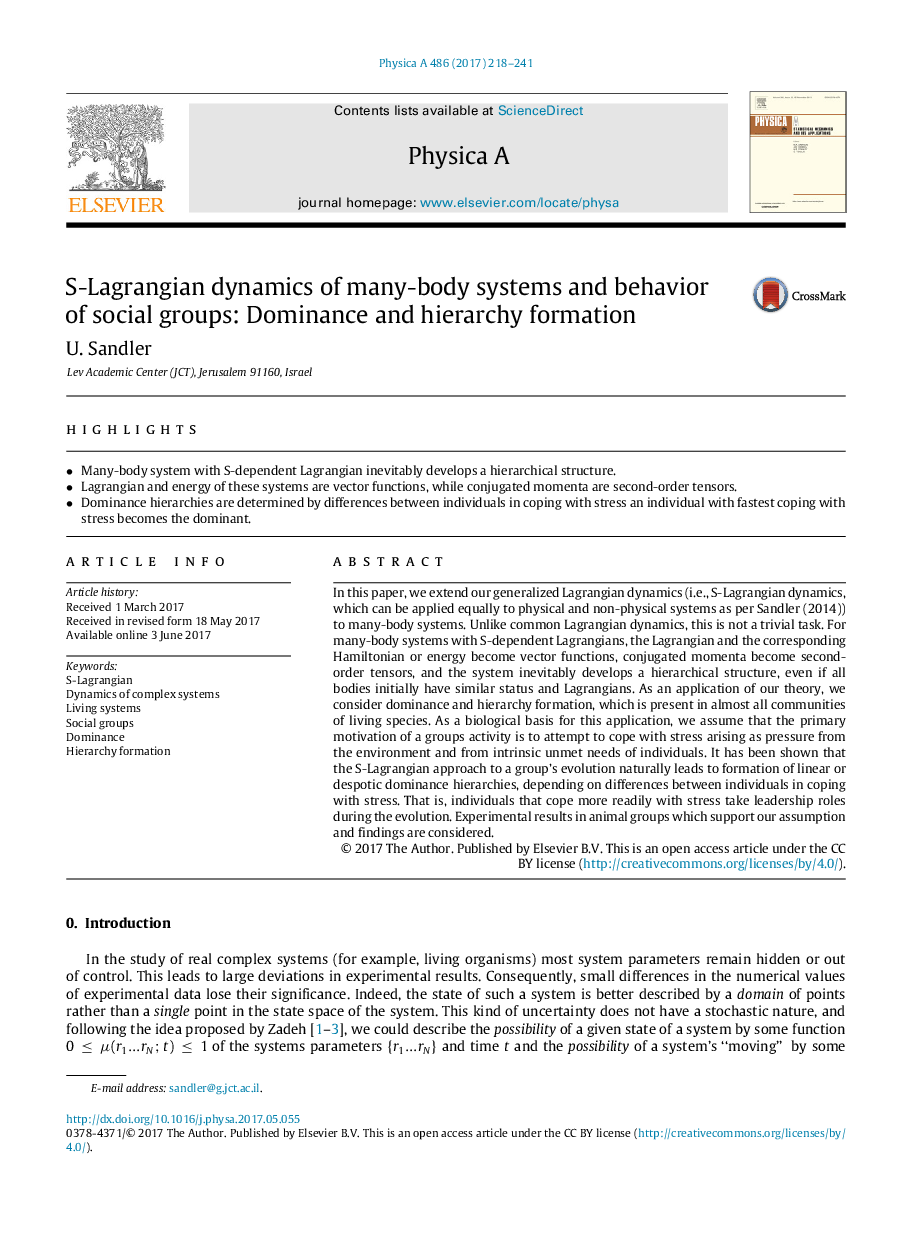| Article ID | Journal | Published Year | Pages | File Type |
|---|---|---|---|---|
| 5102596 | Physica A: Statistical Mechanics and its Applications | 2017 | 24 Pages |
â¢Many-body system with S-dependent Lagrangian inevitably develops a hierarchical structure.â¢Lagrangian and energy of these systems are vector functions, while conjugated momenta are second-order tensors.â¢Dominance hierarchies are determined by differences between individuals in coping with stress an individual with fastest coping with stress becomes the dominant.
In this paper, we extend our generalized Lagrangian dynamics (i.e., S-Lagrangian dynamics, which can be applied equally to physical and non-physical systems as per Sandler (2014)) to many-body systems. Unlike common Lagrangian dynamics, this is not a trivial task. For many-body systems with S-dependent Lagrangians, the Lagrangian and the corresponding Hamiltonian or energy become vector functions, conjugated momenta become second-order tensors, and the system inevitably develops a hierarchical structure, even if all bodies initially have similar status and Lagrangians. As an application of our theory, we consider dominance and hierarchy formation, which is present in almost all communities of living species. As a biological basis for this application, we assume that the primary motivation of a groups activity is to attempt to cope with stress arising as pressure from the environment and from intrinsic unmet needs of individuals. It has been shown that the S-Lagrangian approach to a group's evolution naturally leads to formation of linear or despotic dominance hierarchies, depending on differences between individuals in coping with stress. That is, individuals that cope more readily with stress take leadership roles during the evolution. Experimental results in animal groups which support our assumption and findings are considered.
